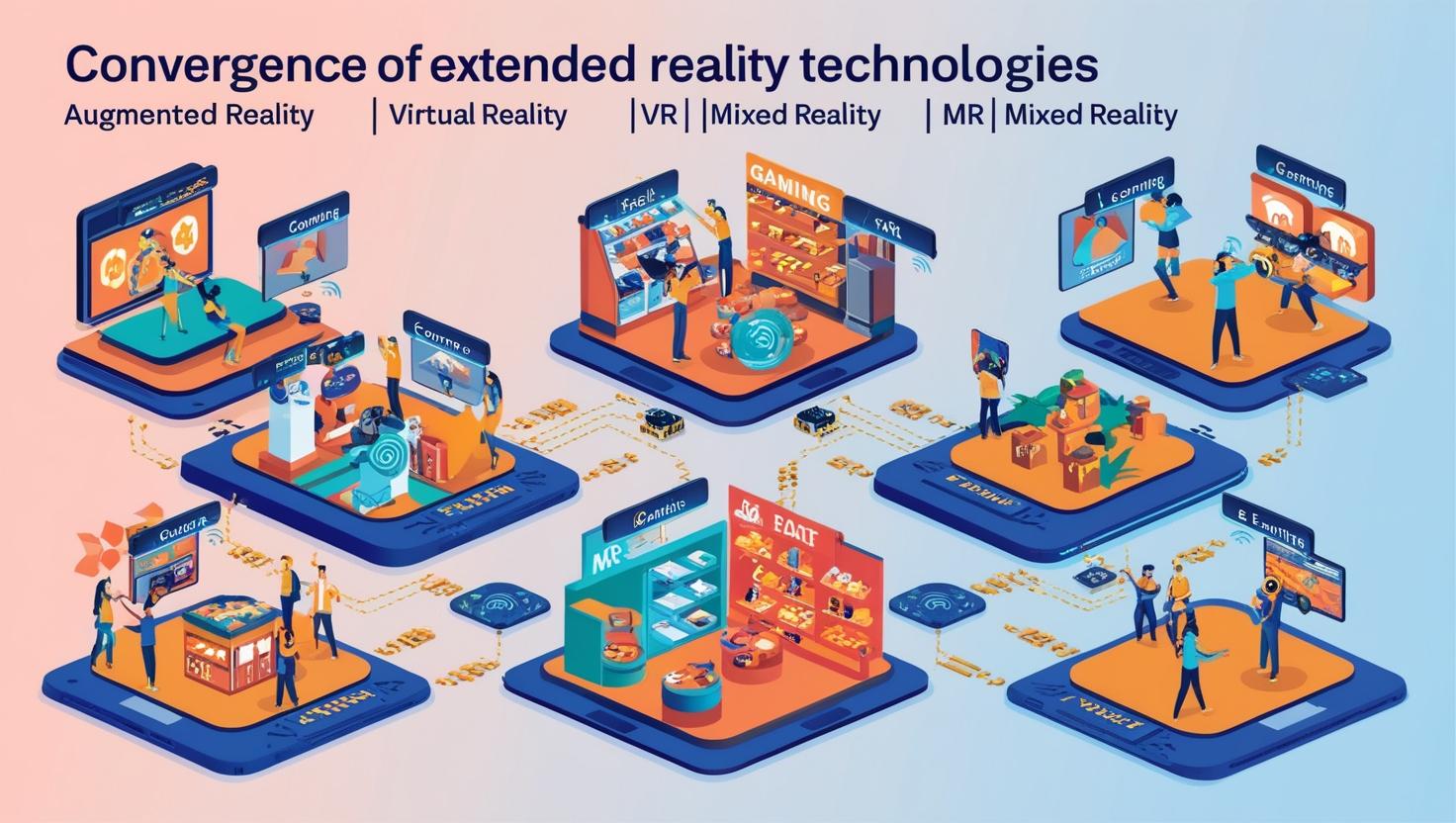The global Extended Reality (XR) market size — which encompasses Virtual Reality (VR), Augmented Reality (AR), and Mixed Reality (MR) — is evolving at a rapid pace. As industries from gaming and healthcare to enterprise training and retail adopt XR technologies, the competitive landscape is becoming increasingly dynamic. To remain ahead, companies must invest in robust competitor intelligence analysis to identify strategic opportunities, emerging threats, and technological advancements.
Comprehensive look at the key competitors, market positioning, innovation pipelines, and strategic moves shaping the Extended Reality (XR) market size.
1. Extended Reality Market Overview: XR’s Expanding Horizon
The Extended Reality (XR) market size worth $84.86 billion by 2029, driven by demand for immersive experiences, remote collaboration, and AI-enhanced interactivity. Adoption is high in gaming and media, but industries like healthcare, education, manufacturing, and defense are rapidly catching up.
As a result, the XR space has attracted a mix of tech giants, nimble startups, and industry-specific solution providers — all vying for market share across hardware, software, and services.
2. Key Players and Strategic Positioning
Apple Inc.
With the launch of the Apple Vision Pro, Apple has officially entered the XR market with a focus on high-end, spatial computing experiences. Its competitive advantage lies in seamless ecosystem integration (iOS, macOS), premium hardware, and developer tools (e.g., ARKit). Apple is targeting both productivity and consumer entertainment, positioning itself at the high-value, mixed-reality end of the spectrum.
Meta (formerly Facebook)
Meta is a dominant force in XR through its Quest line of VR headsets and its broader investment in the metaverse. With an aggressive pricing strategy and developer-friendly platforms like Horizon Worlds, Meta focuses on accessibility and scale. The company is betting on long-term ecosystem control, despite early financial losses in its Reality Labs division.
Microsoft
Microsoft’s strength in enterprise XR is exemplified by its HoloLens mixed reality headset and partnerships with defense and industrial sectors. Its integration of XR with Azure and Dynamics 365 makes it a strong B2B player. Unlike Meta, Microsoft is less focused on consumer markets, positioning itself as a leader in professional and collaborative XR.
Sony
Leveraging its PlayStation ecosystem, Sony’s PS VR2 targets immersive gaming with high-fidelity visuals. Sony focuses on content-driven engagement, partnering with major game studios to deliver exclusive titles. It remains a dominant player in console-based VR but has limited presence outside entertainment.
Download PDF Brochure @ https://www.marketsandmarkets.com/pdfdownloadNew.asp?id=147143592

HTC VIVE
HTC is known for its high-end VR hardware and growing software platform (VIVEPORT). While it lacks the ecosystem of Apple or Meta, HTC differentiates through innovation in wireless and modular VR solutions, as well as its focus on business and creative professionals.
3. Emerging Startups and Niche Innovators
Numerous startups are pushing the boundaries of what XR can do. Companies like Varjo (ultra-high-resolution VR), Magic Leap (enterprise AR), Pico (owned by ByteDance), and RealWear (industrial AR headsets) are gaining traction. These firms often focus on specialized applications or regional markets, making them prime acquisition targets or competitors in vertical-specific deployments.
4. Innovation and IP Analysis
XR development is driven by rapid innovation in:
-
Display resolution and optics (micro-OLED, pancake lenses)
-
Haptics and spatial audio
-
Hand tracking and eye tracking
-
AI-driven spatial mapping
-
Cloud rendering and 5G connectivity
Patents in areas like gesture recognition, spatial computing, and low-latency communication are indicators of long-term capability. Apple, Microsoft, and Meta hold sizable XR-related IP portfolios, while startups often rely on first-mover advantage in emerging use cases.
5. Pricing, Business Models, and Market Access
Competitors vary widely in go-to-market strategies:
-
Meta subsidizes hardware to build user base and monetize through app ecosystems.
-
Apple commands premium pricing with tight ecosystem integration.
-
Microsoft follows a B2B licensing and partnership model.
-
HTC and Varjo charge enterprise-level pricing for advanced specs.
Understanding these models is crucial for benchmarking and developing competitive counter-strategies.
6. Strategic Moves and M&A Activity
Mergers and acquisitions have become a strategic tool to accelerate XR innovation and market reach. Key moves include:
-
Meta’s acquisitions of Oculus, Within, and other XR content studios.
-
Apple’s purchases of AR firms like Mira and NextVR.
-
Microsoft’s partnerships with the U.S. Army and enterprise software providers.
Future M&A activity is expected in content creation, healthcare XR, and AI-enhanced XR capabilities.
7. Market Risks and Competitive Threats
Despite optimism, the XR market faces headwinds:
-
High hardware costs limit mainstream adoption.
-
Content shortages reduce consumer engagement.
-
Privacy and data security concerns in immersive environments.
-
Battery life, motion sickness, and comfort remain product design challenges.
-
Regulatory scrutiny, especially in AI + XR applications.
Firms that can balance innovation with usability, affordability, and privacy will have the advantage.
Conclusion: Navigating the Extended Reality (XR) market Competitive Landscape
The Extended Reality (XR) market size is a fast-moving, innovation-heavy space with shifting competitive dynamics. Success will depend not only on hardware specs, but also on ecosystem control, developer support, content variety, and strategic vision. Competitor intelligence — grounded in technology analysis, partnership tracking, and market modeling — will be a decisive factor in identifying where to play and how to win.
For companies entering or expanding in XR, staying informed about rival strategies and emerging disruptors is no longer optional — it’s a competitive necessity.
